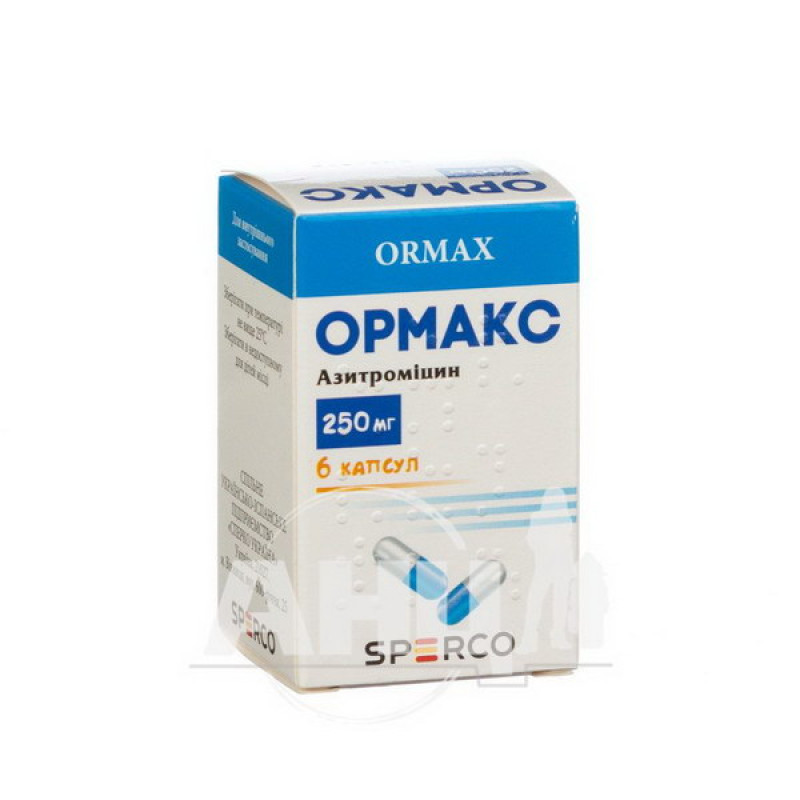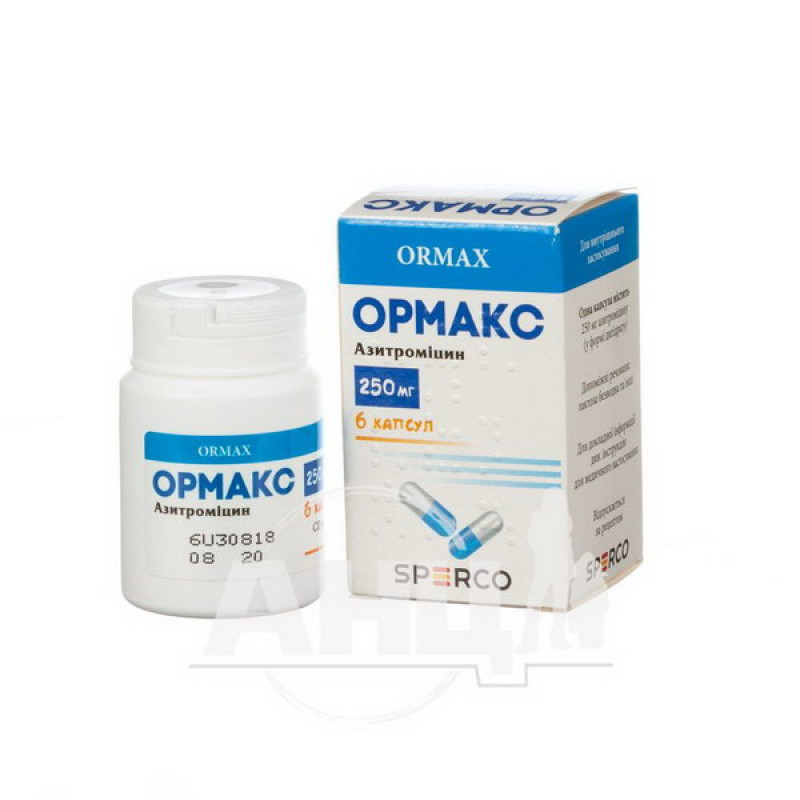Ormax capsules 250 mg container No. 6

Ormax capsules are indicated for infections caused by microorganisms sensitive to azithromycin:
ENT infections (bacterial pharyngitis/tonsillitis, sinusitis, otitis media); respiratory tract infections (bacterial bronchitis, community-acquired pneumonia); skin and soft tissue infections: erythema migrans (initial stage of Lyme disease), impetigo, secondary pyodermatoses; sexually transmitted infections: uncomplicated and complicated urethritis/cervicitis caused by Chlamydia trachomatis.Composition
Active ingredient: azithromycin;
1 capsule contains azithromycin (in the form of dihydrate) 250 mg;
Excipients: lactose, corn starch, sodium lauryl sulfate, magnesium stearate;
The capsule shell contains:
Shell: gelatin, titanium dioxide (E 171);
Cap: gelatin, titanium dioxide (E 171), indigo carmine (E 132);
The marking on the lid is blue dye.
Contraindication
Hypersensitivity to azithromycin, erythromycin or any macrolide or ketolide antibiotic, or to any other component of the drug. Due to the theoretical possibility of ergotism, azithromycin should not be administered concomitantly with ergot derivatives.
Method of application
Capsules of the drug are taken orally once a day 1 hour before or 2 hours after a meal, with a small amount of liquid. In case of missing a dose, the missed dose should be taken as soon as possible, and the next dose should be taken after 24 hours.
Application features
Pregnant women
It should be prescribed during pregnancy only if absolutely necessary.
Children
Azithromycin in capsule form can be prescribed to children weighing more than 45 kg.
Drivers
With caution.
Overdose
Nausea, vomiting, diarrhea, temporary hearing loss.
Treatment: Administration of activated charcoal and general symptomatic and supportive treatment measures.
Side effects
On the part of the digestive system: nausea, diarrhea, abdominal pain; rarely - vomiting, flatulence, transient increase in the activity of liver enzymes.
Possible skin rash, cholestatic jaundice, headache, drowsiness, nephritis, vaginitis, neutropenia or neutrophilia, candidiasis, photosensitivity, eosinophilia.
In children - agitation, insomnia, conjunctivitis, hyperkinesia.
Interaction
Antacids containing magnesium or aluminum hydroxide reduce the absorption of azithromycin. Therefore, it is recommended to observe an interval of at least 2 hours between taking azithromycin and antacids.
Azithromycin does not bind to cytochrome P 450 enzymes, therefore it does not interact with oral anticoagulants, carbamazepine, diphenin, digoxin, cyclosporine, ergotamine, but caution should be exercised when using them simultaneously.
Storage conditions
Store in a place protected from light at a temperature not exceeding 25 °C.
Keep out of reach of children.
Shelf life - 2 years.
There are no reviews for this product.
There are no reviews for this product, be the first to leave your review.
No questions about this product, be the first and ask your question.






